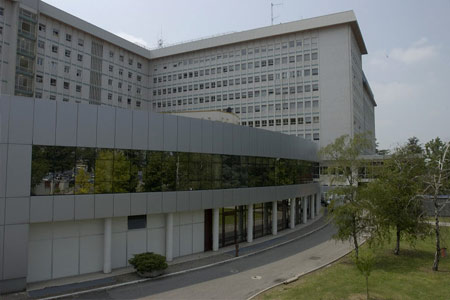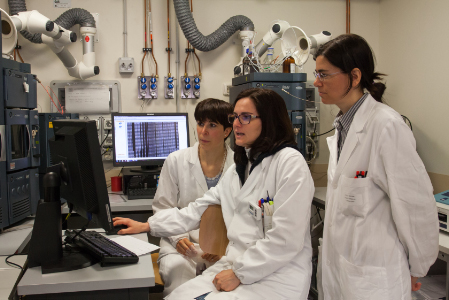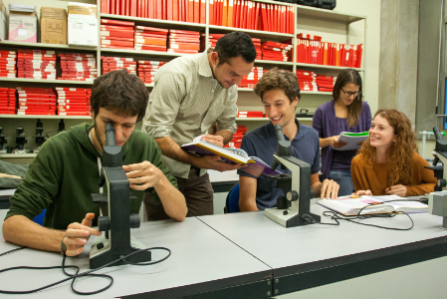- Autori:
-
Paolillo, Stefania; Veglia, Fabrizio; Salvioni, Elisabetta; Corrà, Ugo; Piepoli, Massimo; Lagioia, Rocco; Limongelli, Giuseppe; Sinagra, Gianfranco; Cattadori, Gaia; Scardovi, Angela B; Metra, Marco; Senni, Michele; Bonomi, Alice; Scrutinio, Domenico; Raimondo, Rosa; Emdin, Michele; Magrì, Damiano; Parati, Gianfranco; Re, Federica; Cicoira, Mariantonietta; Minà, Chiara; Correale, Michele; Frigerio, Maria; Bussotti, Maurizio; Battaia, Elisa; Guazzi, Marco; Badagliacca, Roberto; Di Lenarda, Andrea; Maggioni, Aldo; Passino, Claudio; Sciomer, Susanna; Pacileo, Giuseppe; Mapelli, Massimo; Vignati, Carlo; Clemenza, Francesco; Binno, Simone; Lombardi, Carlo; Filardi, Pasquale Perrone; Agostoni, Piergiuseppe
- Titolo:
-
Heart failure prognosis over time: how the prognostic role of oxygen consumption and ventilatory efficiency during exercise has changed in the last 20 years
- Anno:
-
2019
- Tipologia prodotto:
-
Articolo in Rivista
- Tipologia ANVUR:
- Articolo su rivista
- Lingua:
-
Inglese
- Formato:
-
A Stampa
- Referee:
-
Sì
- Nome rivista:
- European Journal of Heart Failure
- ISSN Rivista:
- 1388-9842
- N° Volume:
-
21
- Numero o Fascicolo:
-
2
- Intervallo pagine:
-
208-217
- Parole chiave:
-
Cardiopulmonary exercise test; Heart failure; Peak oxygen uptake; Prognosis; VE/VCO2 slope
- Breve descrizione dei contenuti:
- Aims Exercise-derived parameters, specifically peak exercise oxygen uptake (peak VO2) and minute ventilation/carbon dioxide relationship slope (VE/VCO2 slope), have a pivotal prognostic value in heart failure (HF). It is unknown how the prognostic threshold of peak VO2 and VE/VCO2 slope has changed over the last 20 years in parallel with HF prognosis improvement. Methods and results Data from 6083 HF patients (81% male, age 61 +/- 13 years), enrolled in the MECKI score database between 1993 and 2015, were retrospectively analysed. By enrolment year, four groups were generated: group 1 1993-2000 (n = 440), group 2 2001-2005 (n = 1288), group 3 2006-2010 (n = 2368), and group 4 2011-2015 (n = 1987). We compared the 10-year survival of groups and analysed how the overall risk (cardiovascular death, urgent heart transplantation, or left ventricular assist device implantation) changed over time according to peak VO2 and VE/VCO2 slope and to major clinical and therapeutic variables. At 10 years, a progressively higher survival from group 1 to group 3 was observed, with no further improvement afterwards. A 20% risk for peak VO2 15 mL/min/kg (95% confidence interval 16-13), 9 (11-8), 4 (4-2) and 5 (7-4) was observed in group 1, 2, 3, and 4, respectively, while the VE/VCO2 slope value for a 20% risk was 32 (37-29), 47 (51-43), 59 (64-55), and 57 (63-52), respectively. Conclusions Heart failure prognosis improved over time up to 2010 in a HF population followed by experienced centres. The peak VO2 and VE/VCO2 slope cut-offs identifying a definite risk progressively decreased and increased over time, respectively. The prognostic threshold of peak VO2 and VE/VCO2 slope must be updated whenever HF prognosis improves.
- Id prodotto:
-
107354
- Handle IRIS:
-
11562/992532
- ultima modifica:
-
27 novembre 2022
- Citazione bibliografica:
-
Paolillo, Stefania; Veglia, Fabrizio; Salvioni, Elisabetta; Corrà, Ugo; Piepoli, Massimo; Lagioia, Rocco; Limongelli, Giuseppe; Sinagra, Gianfranco; Cattadori, Gaia; Scardovi, Angela B; Metra, Marco; Senni, Michele; Bonomi, Alice; Scrutinio, Domenico; Raimondo, Rosa; Emdin, Michele; Magrì, Damiano; Parati, Gianfranco; Re, Federica; Cicoira, Mariantonietta; Minà, Chiara; Correale, Michele; Frigerio, Maria; Bussotti, Maurizio; Battaia, Elisa; Guazzi, Marco; Badagliacca, Roberto; Di Lenarda, Andrea; Maggioni, Aldo; Passino, Claudio; Sciomer, Susanna; Pacileo, Giuseppe; Mapelli, Massimo; Vignati, Carlo; Clemenza, Francesco; Binno, Simone; Lombardi, Carlo; Filardi, Pasquale Perrone; Agostoni, Piergiuseppe,
Heart failure prognosis over time: how the prognostic role of oxygen consumption and ventilatory efficiency during exercise has changed in the last 20 years
«European Journal of Heart Failure»
, vol.
21
, n.
2
,
2019
,
pp. 208-217
Consulta la scheda completa presente nel
repository istituzionale della Ricerca di Ateneo 








